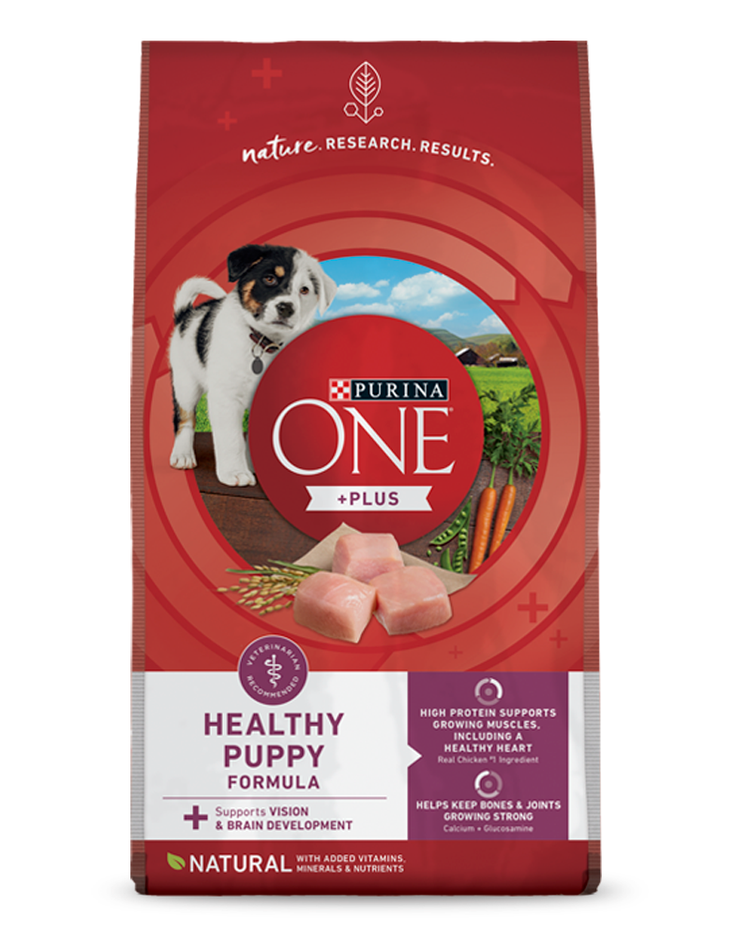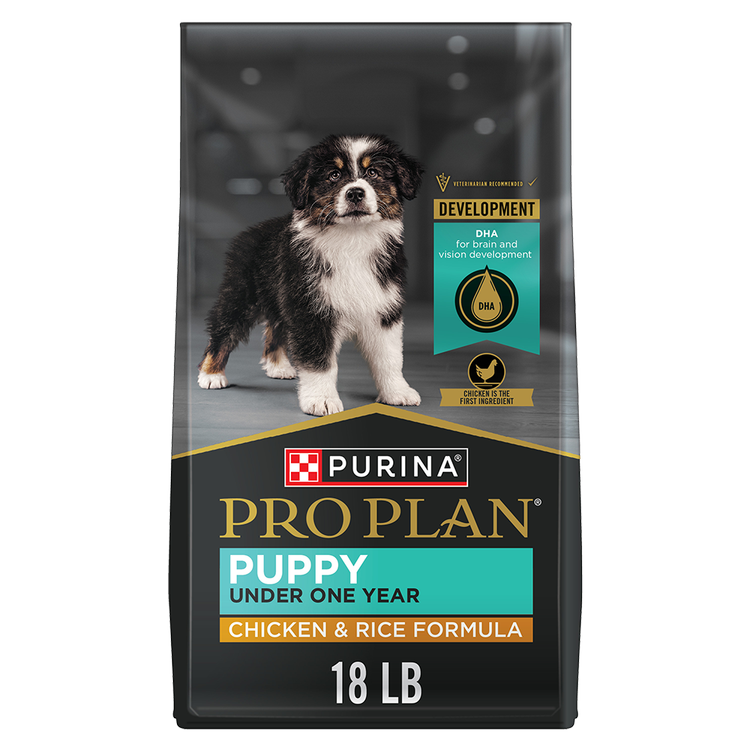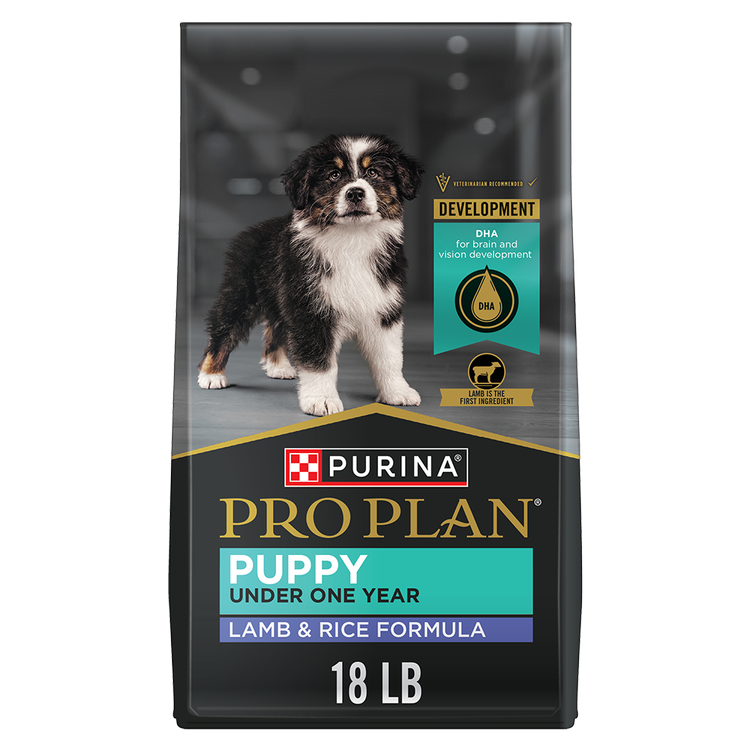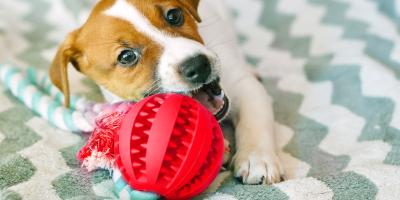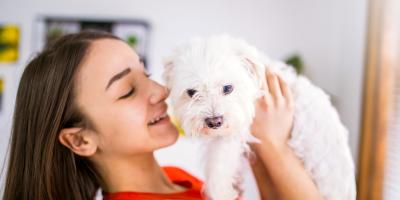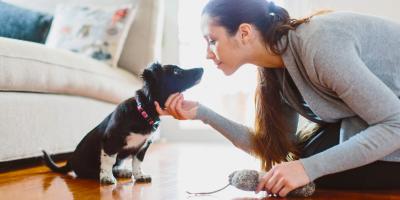It’s a good idea to have all the essentials for a new puppy before bringing him home. Being prepared means you’ll have more time to play together, get to know one another and set yourselves up for success.
Start with this new puppy checklist to make sure you have everything you need, from puppy food and bowls to toys and treats. These items will help make your puppy’s first few weeks at home smooth and enjoyable for you both.
New Puppy Checklist
First and foremost, research local veterinarians to find someone you’re comfortable with and who you trust. It’s critical to find a veterinarian who communicates well and understands you and your family’s needs.
They will handle all your puppy’s vaccinations and exams, can give advice and recommendations if you’re struggling with training or feeding and can also spay or neuter as well as microchip your puppy when the time comes.
Of course, your veterinarian can also provide care if your puppy gets sick. Look for a clinic with hours that work with your schedule and make sure you know who to call for after-hours emergencies.
Next, take this puppy supply list and head to your local pet store to stock up on these essentials.
1. Complete & Balanced Puppy Food
Puppy food is specifically formulated with the right proportions of nutrients to foster healthy growth and development throughout the first year of life.
There are plenty of options to choose from: dry food, wet food, small breed formulas and large breed formulas. Consult with your veterinarian to see what recommendations they have based on your puppy’s specific nutritional needs.
Once you’ve selected a puppy food, make sure you know how much to feed your puppy and how often. Monitor how much your puppy eats and how often he needs to go potty after meals to make sure the food is right for his unique system.
2. Food & Water Bowls
Start with smaller bowls and get bigger ones as your puppy grows. Look for sturdy bowls that won’t tip over easily if your puppy runs into them (he probably will). Also make sure they’re easy to clean.
Have plenty of fresh water available throughout the day. From day one, it’s a good idea to always take him out right after eating and drinking to lessen the chance of accidents in the house.
3. Collar & ID Tags
A collar and ID tags are essential. In many municipalities, they’re required, but even if they aren’t a requirement, they’re helpful in the event your puppy gets lost. This is especially important if your puppy is too young to be spayed/neutered and microchipped.
At a minimum, the ID tag should include his name and your phone number.
There are a variety of styles and materials available for collars. You’ll want something sturdy, but also adjustable to expand with your growing puppy. Otherwise, plan to replace the collar often as he grows.
4. Leash
Leashes are an important training tool, and they’re also required in most cities. Check your local leash laws so you can ensure you’re being compliant when out and about with your new puppy.
As with collars, leashes come in various materials, styles and lengths. A sturdy six-foot leash is great to start training.
Harnesses are another option to help when walking with your puppy. There are several varieties and styles based on your puppy’s specific body type.
Traditional six-foot leads are a good choice over retractable leashes because they’re not easy for the puppy to get tangled in while supervised. The shorter lead is a more effective training tool, and it provides consistency, which is important when working with young puppies and dogs who are new to training, loose leash walking and more.
5. Crate
Crates are another important training tool. They also can provide your puppy with a place to sleep and with a safe space to go if he’s feeling anxious. It’s tempting to get a large crate from the start, especially if you know your puppy will grow into a large dog. For training purposes, however, it’s better to start small.
You want your puppy to have just enough room to stand up and turn around. As they are potty training, they’re less likely to make a mess in their crate if they don’t have enough space to avoid the mess.
6. Bed
Dog beds are more than a cozy spot for a daytime nap. Like many of the other items on this list, they can also serve as a training tool.
When training your puppy, you can teach him to go lie down on his bed. This is useful if he gets excited when someone comes to the door or when you have guests over. He can go to his bed or “his place” and calm down until you tell him to “come.”
7. Toys
Toys are a puppy essential. Puppy-safe chew toys are great for teething puppies and help them learn what is appropriate for them to chew on and what’s not (like your favorite pair of shoes or the legs on your dining room table).
Avoid toys with small parts or those that are soft enough for your puppy to break apart. Also avoid any sharp objects or balls of yarn, twist ties or other small objects that could cause him to choke. Plastic bags, including pet food and treat bags, chip and cereal bags, etc., are a suffocation risk.
Socks, t-shirts, old shoes or other articles of clothing will only confuse your puppy, as he won’t understand what is and isn’t a toy.
Always supervise your puppy with any toys and take them away if he starts to break off pieces or gets to the squeaker inside.
8. Treats
Treats are a great way to reward your puppy for good behavior. Using treats for positive reinforcement can help him learn to go potty outside, to walk on a leash, to go into his crate and more.
Make sure any treats you give are age appropriate. Training treats should be small enough to eat in one or two bites, so it doesn’t derail your progress. Don’t go overboard with treats, though. Your puppy needs to get most of his calories and nutrition from his food. Only 10 percent of his calories should come from treats, so you can also use a portion of his daily kibble when training to keep his nutrition and learning on a path to success.
9. Grooming Supplies
The type of grooming supplies you’ll need depends on the breed. Short-haired breeds may only need a brush, shampoo for the occasional bath and a nail trimmer. Long-haired breeds may need various brushes and combs to maintain their coat throughout the year.
It helps to start a grooming routine early so your puppy gets used to being brushed and having his paws and ears handled by you, a groomer or a veterinarian.
Long-haired breeds may also need regular haircuts, so it’s a good idea to research possible groomers in your area. A groomer can also handle baths and nail trims for short-haired dogs if needed.
Dog breeds with large, floppy ears may need regular ear cleanings to help prevent infections and general discomfort. Ask your veterinarian for a recommendation on an ear cleaning solution and the best way to clean your puppy’s ears.
Also, talk with your veterinarian about your puppy’s dental health, as proper oral care is essential to your puppy’s overall well-being.
10. Cleaning Supplies
Despite your best efforts, accidents will happen. Look for enzymatic cleaners and pet stain and odor removers in the pet aisle – not the cleaning aisle.
These products are made specifically to remove pet stains and odors, which helps prevent puppies from marking the same spots over and over.
Store any cleaning supplies on a high shelf or in a closet or cabinet your puppy cannot access.
When considering your new puppy’s needs, these are the essential items you’ll want to have on hand before you bring him home. This can help limit the last minute trips to the store and being prepared means you can spend more time playing, training and bonding.
For more puppy-related information and tips, visit our Pet Expertise page.

Be Rewarded for Your Purina Purchases
Earn and redeem points for Purina products with myPurina app.



